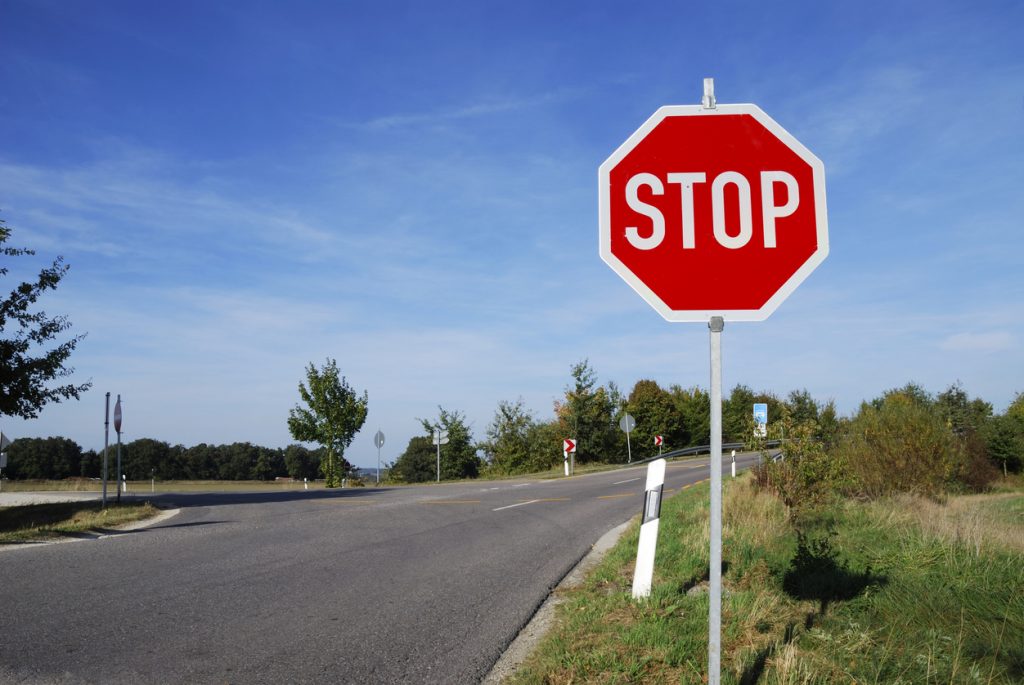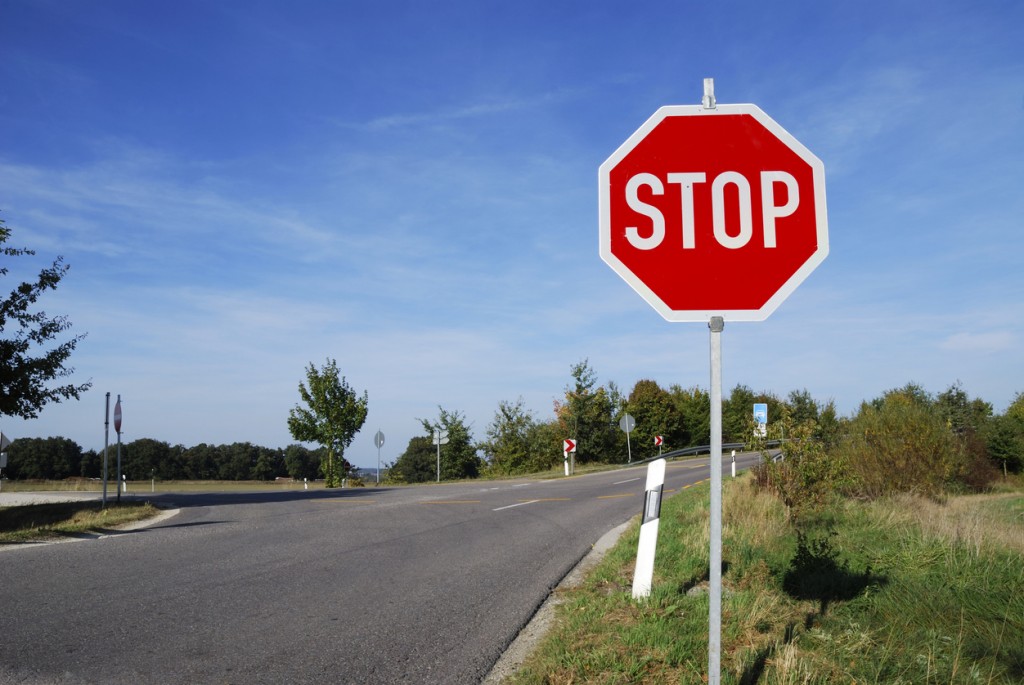Stop, yield, and try not to run over these stories.
Stop
In the early days of car travel in the late 19th century, driving was chaos—there weren’t many universal or codified laws related to traffic or safety measures in place. In 1900, a concerned citizen—meaning he didn’t actually drive a car—named William Phelps Eno published an article in Road and Driver, one of first magazines focusing on roads and drivers called “Reforming Our Street Traffic Urgently Needed.” The crux of his call for decency was the suggestion to install signs at intersections with the word “stop” written on them, which would allow for each driver at the different points of the crossways to have a turn (and not run into each other). The city of Detroit (home of the American auto industry) thought it was a good idea and installed the first STOP signs in 1915—a white rectangle with the word “stop” written on it in big, black letters. Similar signs of various designs popped up around the country, but it wasn’t until 1954 that the national Manual on Uniform Traffic Control Devices mandated that stop signs be red and eight-sided.
Yield
In 1939, a Tulsa, Oklahoma, police officer named Clinton Riggs invented the “Yield” sign, but the traffic authorities he took it to told him the concept was too different and difficult to understand. He dropped the idea for a decade, until 1951, when Tulsa was experiencing a slew of accidents at the busy intersection of Columbia and First Streets. He pitched his “Yield” sign and concept again. This time, it was accepted, and the accident rate virtually vanished. By 1955, the “Yield” sign had gone nationwide, but altered slightly in form. Riggs’ original design was yellow and bore the phrase “Yield Right of Way.” It wound up as an inverted triangle painted red with just the word “Yield.”
Traffic Cones
Charles Scanlon painted road lines for the city of Los Angeles in the 1930s and ‘40s. To make sure his freshly painted lines weren’t run over, he set up makeshift safety markers made out of hollowed out pieces of cone-shaped wood set atop metal tripods. Cars ran over them anyway, so in 1941 he teamed up with a tire shop owner and made cones out of strips of tire rubber sewed together into cone-shapes. Cars still ran over them, but they weren’t immediately wrecked (nor did they do damage to cars). To make them as visible as possible, Scanlon decided to paint them orange. By 1958, orange rubber traffic cones were in mass production and mainstream use.










